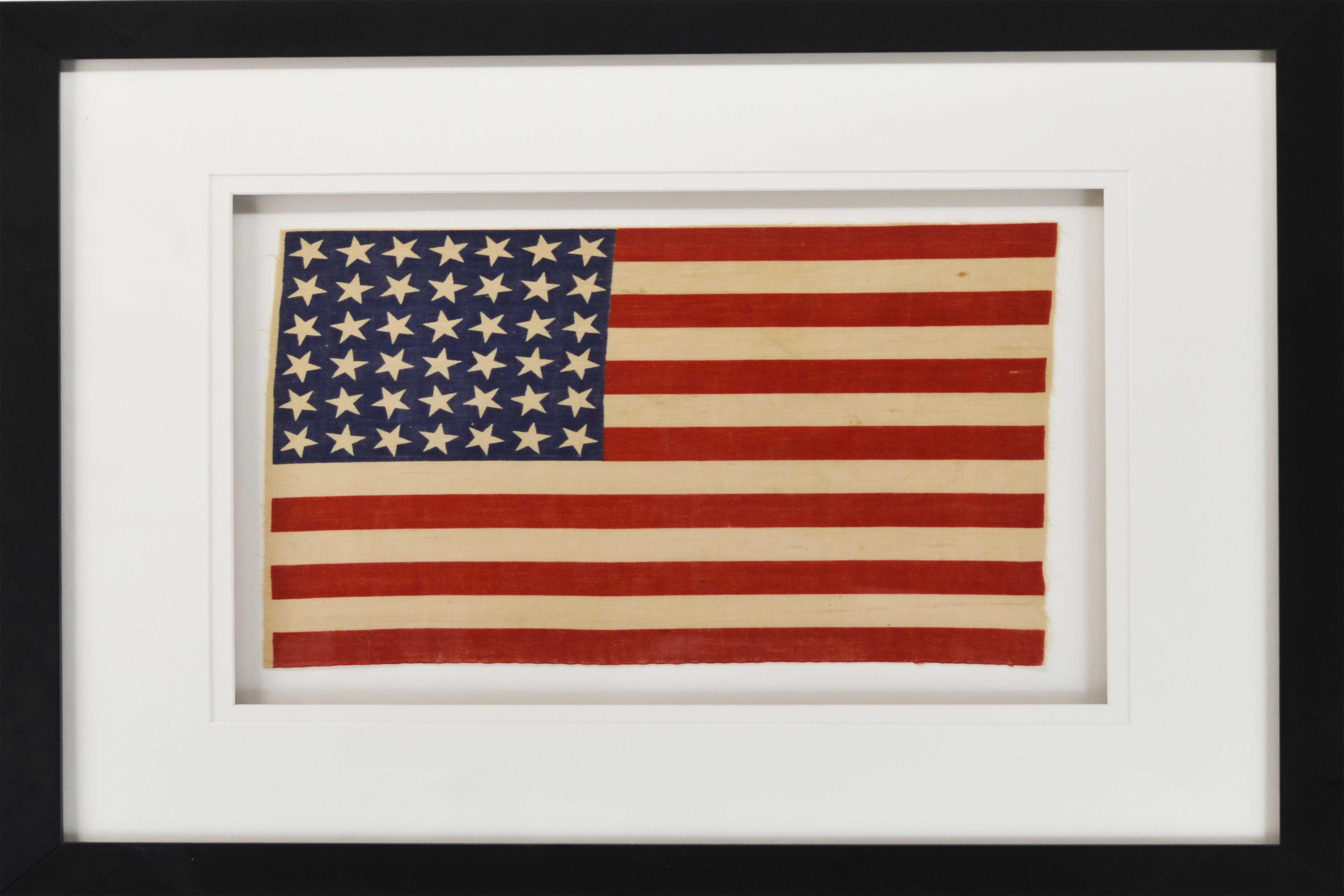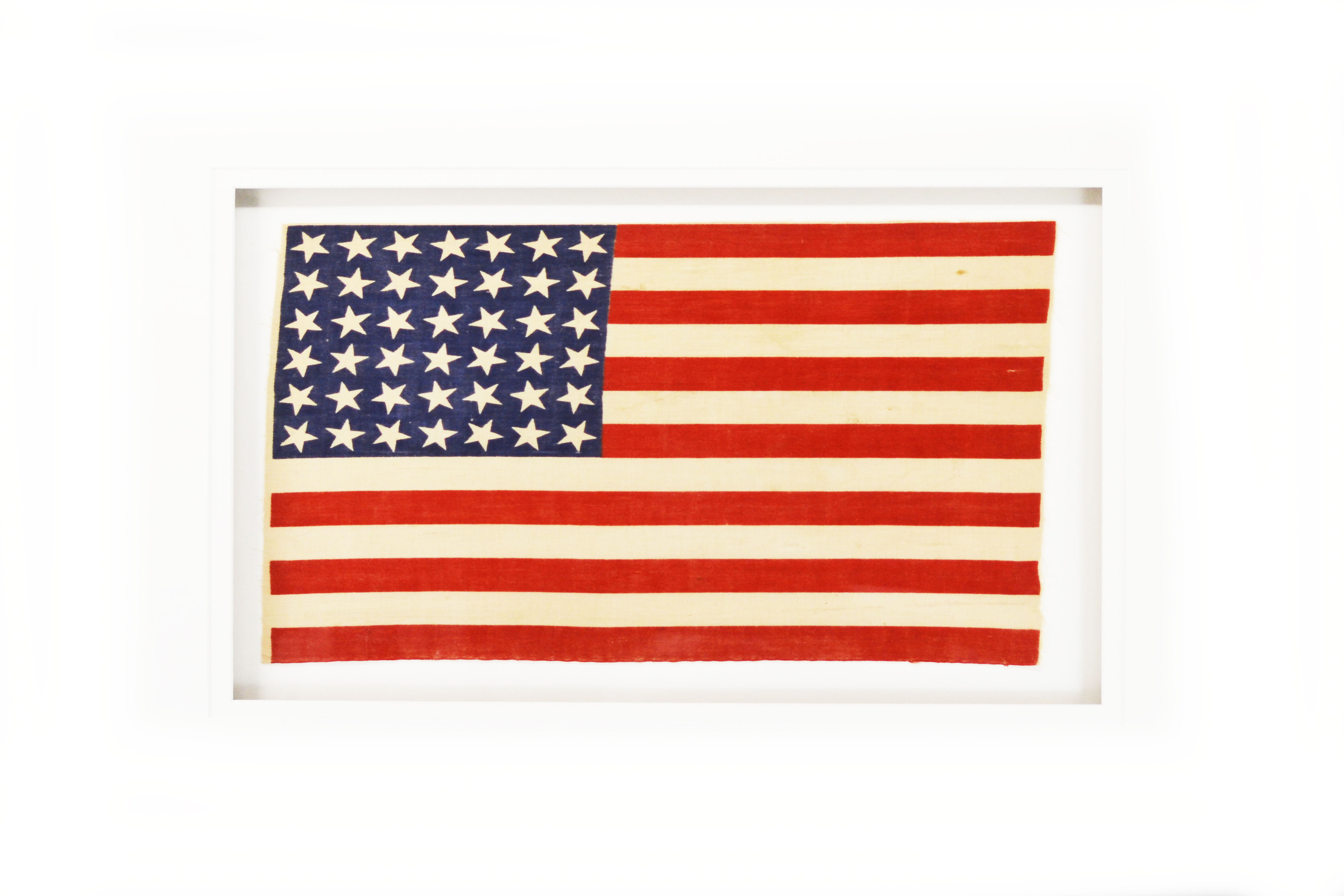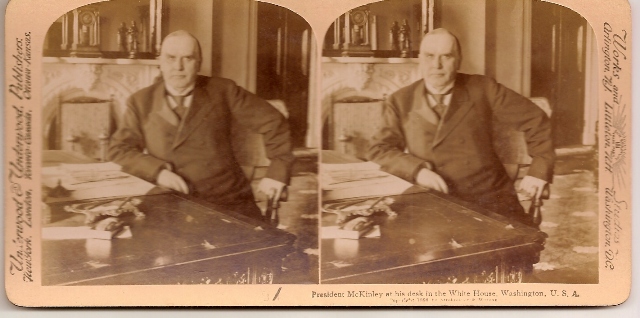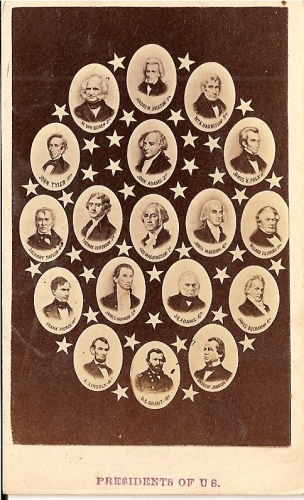Description
42 Star American Flag / SOLD
Authentic antique 42 STAR flag circa 1889-1890. Made of cotton by press printing.
Rare spinning star arrangement
The 42 star flag was instantly obsolete on July 4th1890 when five states were added to the union on this same date.
This particular forty-two star pattern was based on a thirty-eight star pattern, the only difference being the four larger stars (see the comparison image). The flag maker reworked the thirty-eight star stamp, so as to shoehorn an additional four stars onto the canton. Interestingly, the thirty-eight star stamp was a child of a thirty-four star stamp. Such reuse of the manufacturing equipment over this span of time points to the crude nature and frugality of 19th century flag making.
This flag is printed on a plain weave cotton, which has significantly more substance than most cottons that are used for parade flags. Both the blues and reds of this flag are rich in color, in contrast to its thirty-eight star counterpart (again, see the comparison image). The thirty-eight star flag’s stripes are closer to orange than red. Such a color is a result of the use of either madder or cochineal to create the red dye, and is common in flags dating between 1850 and 1870 (and to a lesser extent up to 1880). Clearly, the forty-two star flag used a more modern dying technique than its counterpart. We find this obvious transition in dying techniques to be quite interesting.
The forty-two star flag is an oddity in that its star count was never official. In 1889, Congress considered adding the Dakota Territory as a single state. What happened, however, was that the Dakota Territory was split it into two states: North Dakota and South Dakota, and they were both admitted on November 2nd, 1889. Soon thereafter, on November 8th, 1889 Montana was admitted as the forty-first state, and on November 11th Washington was admitted as the forty-second. When Congress went on break, flag makers began producing anticipatory forty-two star flags.
To the surprise of many, on July 3rd, 1890—just one day before the forty-two star flag was going to be official—Congress admitted Idaho as the forty-third state. As a result, the forty-two star flag never became official, but the 43 star did. Just a few days later, on July 10th, 1890, Congress admitted Wyoming as the forty-fourth state. As a result of this rapid succession of state admissions, flag makers made large quantities of unofficial forty-two star flags and official forty-four star flags, but hardly any forty-three star flags (despite it being an official star count).Am
Benjamin Harrison was president during this period of American history.
Flag Size:11 x 17
#10734
Conservation
Our in-house professional framers use only conservation framing methods used by museums. We only use acid free cotton rag mats and gas free materials along with safe ultra-clear UV acrylic. The UV acrylic is clearer than glass and unlike glass it will not break. Our flags are museum mounted using safe acid free hinges, which does not damage the flag/item in any way like sewing flags down does. The hinge mounting is completely reversible which is the prime focus to achieve in conservation framing.
Sewing a flag down as some framers and company’s do is very costly to the customer and can damage the flag. Sewing flags down is an out of date, old process that can and usually does damage the flag over time as it hangs in the frame. In some cases, sewing the flag down can cause irreparable damage and ruin your investment in the flag you purchased.
This is what happened to the Old Glory Flag in the Smithsonian. The Smithsonian conservators spent millions of dollars to repair and reverse the damage to the flag caused by sewing the historical flag down. Framers have used the sewing method in the past and some do now because they do not know any better and are stuck with a failed technology and the main reason is they make much more money from the customer by charging huge fees to sew a flag down. Time has proved sewing a flag down is damaging to the flag and very costly to the customer. Our mounting process is safe, cost effective and preserves the antique flag for generations to come.






